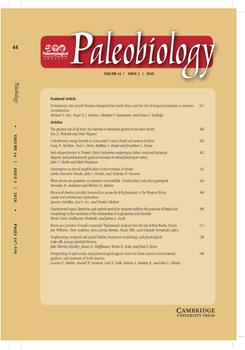The Main Karoo Basin of South Africa contains a near-continuous sequence of continental deposition spanning ∼80 Myr from the mid-Permian to the Early Jurassic. The terrestrial vertebrates of this sequence provide a high-resolution stratigraphic record of regional origination and extinction, especially for the mid-late Permian. Until now, data have only been surveyed at coarse stratigraphic resolution using methods that are biased by nonuniform sampling rates, limiting our understanding of the dynamics of diversification through this important time period. Here, we apply robust methods (gap-filler and modified gap-filler rates) for the inference of patterns of species richness, origination rates, and extinction rates to a subset of 1321 reliably-identified fossil occurrences resolved to approximately 50m stratigraphic intervals. This data set provides an approximate time resolution of 0.3–0.6 Myr and shows that extinction rates increased considerably in the upper 100m of the mid-Permian Abrahamskraal Formation, corresponding to the latest part of the Tapinocephalus Assemblage Zone (AZ). Origination rates were only weakly elevated in the same interval and were not sufficient to compensate for these extinctions. Subsampled species richness estimates for the lower part of the overlying Teekloof Formation (corresponding to the Pristerognathus and Tropidostoma AZs) are low, showing that species richness remained low for at least 1.5–3 million years after the main extinction pulse. A high unevenness of the taxon abundance-frequency distribution, which is classically associated with trophically unstable postextinction faunas, in fact developed shortly before the acme of elevated extinction rates due to the appearance and proliferation of the dicynodont Diictodon. Our findings provide strong support for a Capitanian (“end-Guadalupian”) extinction event among terrestrial vertebrates and suggest that further high-resolution quantitative studies may help resolve the lack of consensus among paleobiologists regarding this event.
How to translate text using browser tools
8 August 2018
Evolutionary rates of mid-Permian tetrapods from South Africa and the role of temporal resolution in turnover reconstruction
Michael O. Day,
Roger B. J. Benson,
Christian F. Kammerer,
Bruce S. Rubidge
ACCESS THE FULL ARTICLE

Paleobiology
Vol. 44 • No. 3
Summer 2018
Vol. 44 • No. 3
Summer 2018




